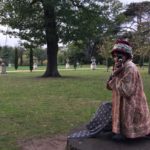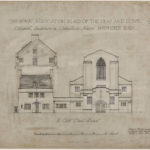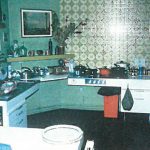The Many Lives of Alice Marie Lillie: Part One – Her Illness and Treatment
Maxine looks at the notes of another resident of Chiswick House, and finds a troubled woman gradually retreating into a world of make believe.
 Survey results: deaf and disabled people in the cultural sector,
Survey results: deaf and disabled people in the cultural sector,
 Curating for Change: deaf and disabled people leading in museums,
Curating for Change: deaf and disabled people leading in museums,
 ‘I was always rebelling against the system’,
‘I was always rebelling against the system’,
 BSL introduction to the stories of Deaf people told by the History of Place project,
BSL introduction to the stories of Deaf people told by the History of Place project,
 Take our surveys, help us as we develop a work placement programme,
Take our surveys, help us as we develop a work placement programme,
 Washing up,
Washing up,
 Cooking,
Cooking,
 Typing,
Typing,
 Kitchen at Grove Road – two,
Kitchen at Grove Road – two,
 Kitchen,
Kitchen,
Maxine looks at the notes of another resident of Chiswick House, and finds a troubled woman gradually retreating into a world of make believe.
In her second look at the casenotes of one inmate of Chiswick House, Max focuses on her life in the years before she was admitted, and asks whether there are any clues here as to why she developed her illness.
Ann Newman looks at the case notes of a female patient of Chiswick House, finds evidence of Victorian attitudes percolating into 20th century medical thought, and discovers more loose ends than satisfying conclusions…
Maxine uncovers the story of an inmate of Manor House Asylum, Chiswick who may have been suffering from a hereditary degenerative disease. But further digging suggests there may be more to her initial diagnosis…
Nina explores a young woman admitted to an asylum with insomnia and visions with religious overtones. She asks how we should interpret the diagnoses of other periods.
Nina on the difficulty of deciphering other people’s handwriting in historical documents, and the quest to find women’s lives at Chiswick Asylum.
A Northern Irish landowner, preoccupied with refuting those who denied Shakespeare’s authorship, emerges from Aliide Naylor’s research into Chiswick House Asylum.
An exploration of information and exhibits at Glenside Museum in Bristol
Between 1892 and 1928, Chiswick House was a private asylum, run by the Tuke family, who rented the house from the Duke of Devonshire. Francesca visits to find out more.